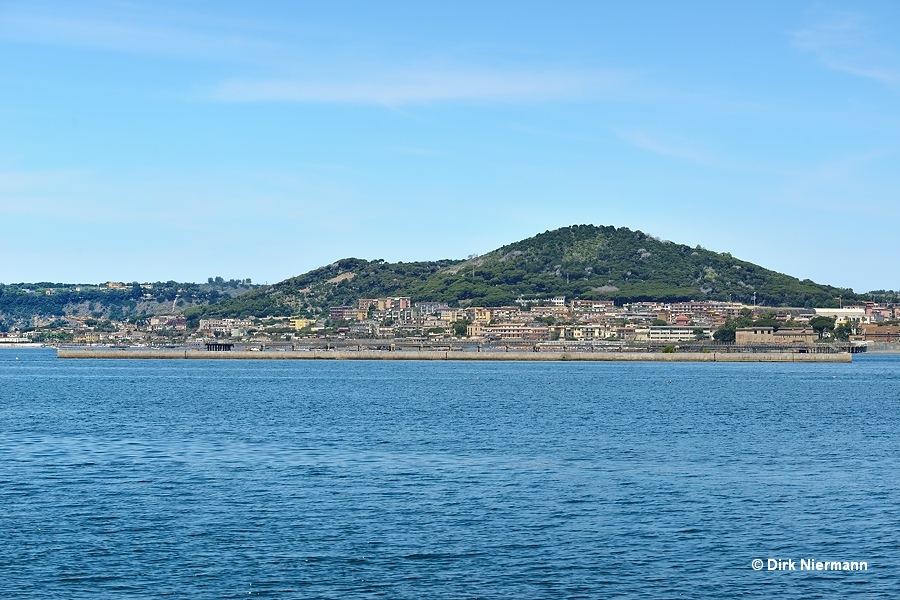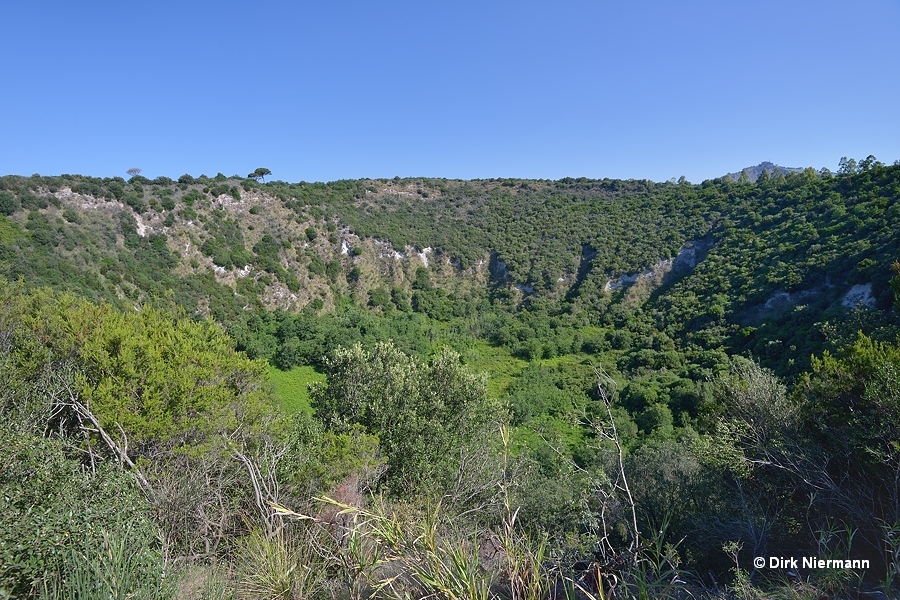Campi Flegrei (Phlegraean Fields)
For a long time in history Mount Vesuvius was believed to be the most dangerous volcano on the European mainland. That changed from the 1990s onwards when scientists learned step by step that the more than 40 single volcanic craters on the Campi Flegrei (Burning Fields) altogether are parts of a so-called supervolcano, whose destruction potential surpasses that of Mount Vesuvius by far. On a closer look, both volcanic systems are not completely independent because Vesuvius, beside of its own magma chamber in 5 km (3 miles) depth, shares the main magma reservoir in 10 km (6 miles) depth with its larger neighbor. Already in the Middle Ages people had the feeling that the Campi Flegrei lie on top of the gates of hell. But only in recent times the full dimensions of the 15 km (9 miles) in diameter measuring caldera were recognized, because large parts of it in the Baia di Pozzuoli (Bay of Pozzuoli) are covered by the sea.
The Campi Flegrei caldera has been formed by two main eruptions. Around 39,000 years before present, the Archiflegreo volcano erupted about 500 km3 (120 cu mi) of magma, which would have been enough to cover the whole of Europe with 5 cm (2 in) of ash. The eruption formed an underwater crater with a margin that outlines the caldera up until recent times. Presumably, it contributed decisively to the extinction of the Neanderthals. A second major eruption occured 12,000 years ago within the old crater. Both times the position of today's Pozzuoli was center of the activity.
The last eruption of the Campi Flegrei was a minor one. It took place in 1538, and raised the symmetrical crater of Monte Nuovo (New Mountain). In this event the village of Tripergole near Lake Lucrino was completely destroyed, including its popular hot springs.

Meanwhile tightly enclosed by the houses of Pozzuoli, Monte Nuovo took over the role of a city park and invites to hike and to explore the crater rim. However, the only thermal features on the crater are some almost inactive fumaroles.
